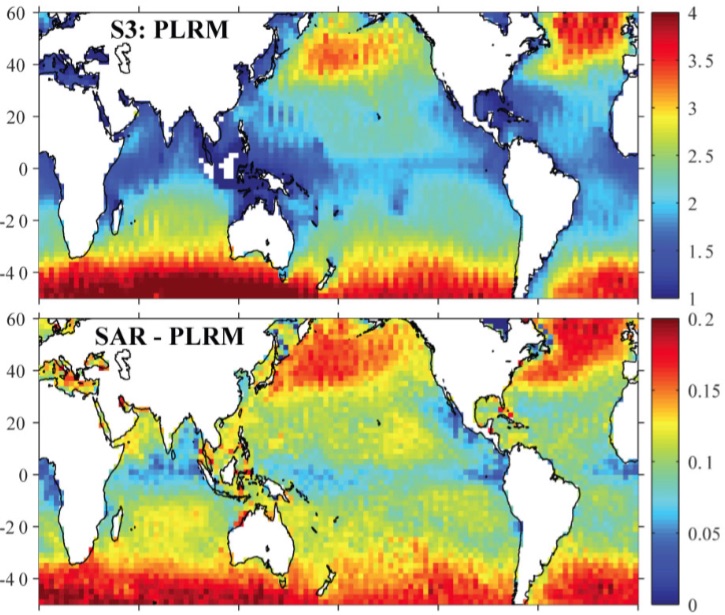Abstract's details
Homogenizing Metocean Data from Sentinel-3
Event: 2020 Ocean Surface Topography Science Team Meeting (virtual)
Session: Instrument Processing: Measurement and Retracking
Presentation type: Forum only
The shape of altimeter waveforms generated by LRM and SAR processing differ considerably, necessitating the use of different retracking algorithms to extract the geophysical parameters of interest. When these two approaches are applied to Sentinel-3A data there is a disparity in the values estimated that is not simply a function of the random noise. Analysis of large volumes of data from the recent (January 2020) processing show systematic differences that are related to the shape of the waveforms. The PLRM estimates of wave height are roughly equivalent to those obtained by Jason-3, whereas those derived from SAR processing read higher and increasingly more so at large wave heights. The disparity in the sigma0 estimates from the two estimators is significantly affected by the high-frequency variability due to fading noise on each individual waveform, and can consequently be corrected for using adjustments from intra-1 Hz analysis. Subsequent adjustments, based on the sigma0-SWH conditions further reduce the mismatch between these two processing lines.
Figure : (upper) Mean wave height distribution from Sentinel-3A PLRM data fro the whole of 2019. (lower) Mean difference of SAR and PLRM estimates for the same period. (Figure taken from Quartly et al, 2020, in Remote Sensing)

Figure : (upper) Mean wave height distribution from Sentinel-3A PLRM data fro the whole of 2019. (lower) Mean difference of SAR and PLRM estimates for the same period. (Figure taken from Quartly et al, 2020, in Remote Sensing)

Contribution: OSTST2020_Quartly.pdf (pdf, 2204 ko)
Back to the list of abstract